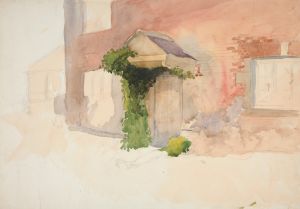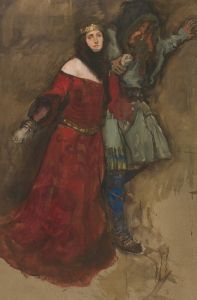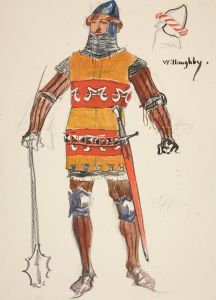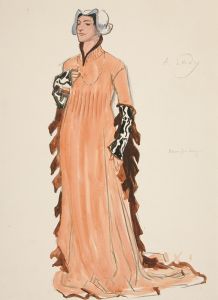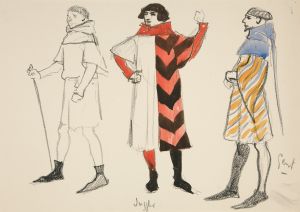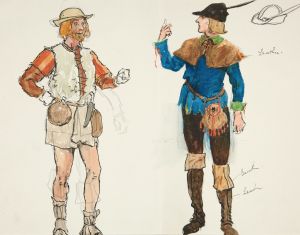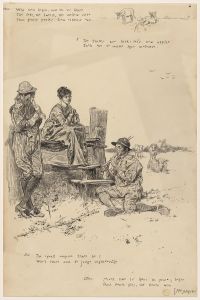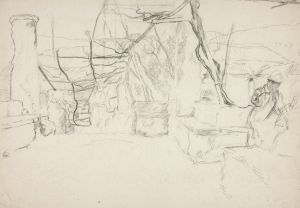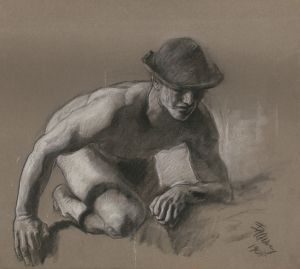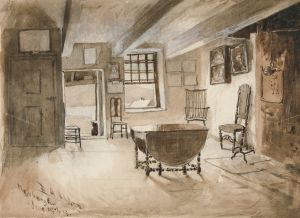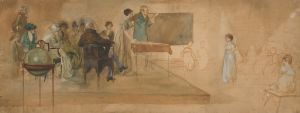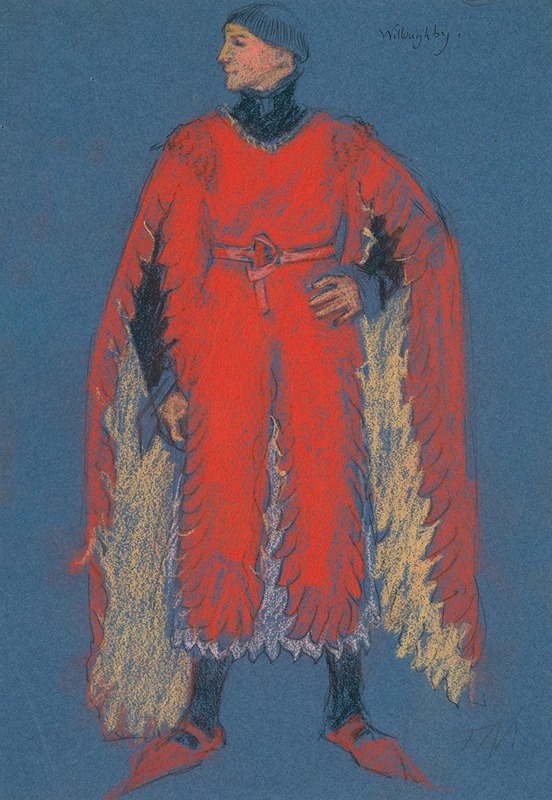
Willoughby, costume sketch for Henry Irving’s Planned Production of King Richard II
A hand-painted replica of Edwin Austin Abbey’s masterpiece Willoughby, costume sketch for Henry Irving’s Planned Production of King Richard II, meticulously crafted by professional artists to capture the true essence of the original. Each piece is created with museum-quality canvas and rare mineral pigments, carefully painted by experienced artists with delicate brushstrokes and rich, layered colors to perfectly recreate the texture of the original artwork. Unlike machine-printed reproductions, this hand-painted version brings the painting to life, infused with the artist’s emotions and skill in every stroke. Whether for personal collection or home decoration, it instantly elevates the artistic atmosphere of any space.
Edwin Austin Abbey's "Willoughby, costume sketch for Henry Irving’s Planned Production of King Richard II" is a preparatory artwork created by the American artist and illustrator Edwin Austin Abbey (1852–1911). The sketch was part of Abbey's extensive work in designing costumes for a proposed theatrical production of William Shakespeare's King Richard II, which was to be staged by the renowned English actor-manager Sir Henry Irving (1838–1905). Although the production ultimately never came to fruition, Abbey's costume designs remain significant as examples of his meticulous research and artistic skill.
Abbey was known for his dedication to historical accuracy, and his costume sketches for King Richard II reflect his commitment to authenticity. He conducted thorough research into the clothing and armor of the late 14th century, the period in which the play is set. This attention to detail is evident in the "Willoughby" sketch, which depicts the character of Lord Willoughby, a nobleman who appears in the historical drama. The sketch showcases Abbey's ability to combine historical fidelity with artistic creativity, capturing the essence of the character while adhering to the visual aesthetics of the medieval period.
The medium of the sketch is likely pencil, ink, or watercolor, as Abbey often used these materials in his preparatory works. The drawing includes detailed annotations and notes, which were intended to guide the costume makers in creating garments for the stage. Abbey's designs were not only functional for theatrical purposes but also highly regarded as standalone works of art.
Henry Irving, one of the most influential figures in 19th-century British theater, had a reputation for producing lavish and historically informed Shakespearean plays. He collaborated with prominent artists like Abbey to elevate the visual and dramatic quality of his productions. However, despite Abbey's extensive preparations, Irving's production of King Richard II was never realized, and the reasons for this remain unclear.
Today, Abbey's costume sketches, including "Willoughby," are valued as part of his artistic legacy. They provide insight into the collaborative process between artists and theater practitioners during the late Victorian era. Many of these works are preserved in museum collections, where they continue to be studied and appreciated for their historical and artistic significance.





